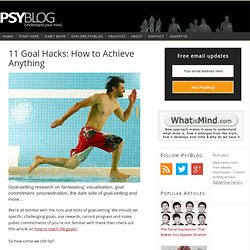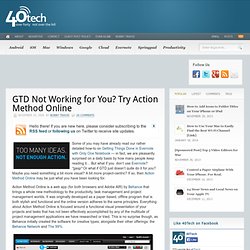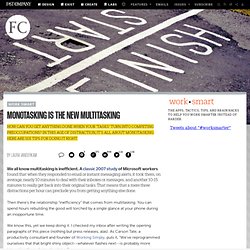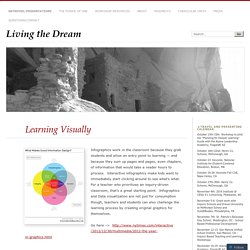

How Mindfulness Helps You See What's Missing (And Why You'd Want To) In Basic Mindfulness (the system of Mindfulness I teach) there’s a term called “Gone.”

Gone refers to any moment of partial or complete disappearance that you happen to notice. It’s as simple as that. If you notice a bird stop chirping, if you notice an itch become less itchy, if you notice a car pass by and disappear from view, you could call these events “Gone.” The technique sensitizes you to a fundamental truth: everything is always disappearing. Impermanence is something you can understand intellectually, as in “this too shall pass.” What I find tragically fascinating about this technique is how frequently students think they’re doing it wrong or don’t believe they can do it at all. Something happened to me the other day that gave me insight into this dilemma, and illuminated the trap our minds so easily get caught in.
These minds of ours get stuck – sometimes terribly, terribly stuck. I feel so lucky to have caught the bus of that beautiful moment. Photo Credit: Shutterstock.com. 11 Goal Hacks: How to Achieve Anything. Goal-setting research on fantasising, visualisation, goal commitment, procrastination, the dark side of goal-setting and more… We’re all familiar with the nuts and bolts of goal-setting.

We should set specific, challenging goals, use rewards, record progress and make public commitments (if you’re not familiar with these then check out this article on how to reach life goals). So how come we still fail? This psychological research suggests why and what mindsets should help us reach our goals. 1. The biggest enemy of any goal is excessive positive fantasising.
The Brain Hacks Top Founders Use To Get The Job Done. Katia Verresen's new client had a big problem: He needed to find three to four extra hours in his day.

This, of course, seemed like an impossible feat for an oversubscribed startup founder, but his ability to fundraise and recruit the best talent depended on it. By the time he met Verresen, executive coach to many such founders, he was drained, pessimistic, dreading every week before it started. Even though tech culture champions sleeplessness, overtime and burnout, Verresen has seen how this mindset can lead to failure.
How To Simplify A Complicated Life. 52 Totally Feasible Ways To Organize Your Entire Home. Organizing Homelife. IHeart Organizing. The Organised Housewife : Ideas for organising, decluttering and cleaning your home. GTD Not Working for You? Try Action Method Online. Hello there!

If you are new here, please consider subscribing to the RSS feed or following us on Twitter to receive site updates. Some of you may have already read our rather detailed how-to on Getting Things Done in Evernote with Only One Notebook — in fact, we are pleasantly surprised on a daily basis by how many people keep reading it… But what if you don’t use Evernote? *gasp* Or what if GTD just doesn’t quite do it for you?
Maybe you need something a bit more visual? A bit more project-centric? Action Method Online is a web app (for both browsers and Adobe AIR) by Behance that brings a whole new methodology to the productivity, task management and project management worlds. How Evernote Works Like Your Memory: An Interview with Maureen Ritchey, Cognitive Neuroscientist. Evernote is designed to work the way your brain does and a few months ago, a neuroscientist named Maureen Ritchey came by our offices to explain exactly why that’s the case.

We didn’t want to keep the fascinating information to ourselves, so we asked Maureen to stop by our blog and share some of her knowledge with our users. Thanks, Maureen! What is your background and area of research? I’m a cognitive neuroscientist, which means that I study how the brain supports mental function. I completed my PhD at Duke University, where my graduate work focused on the influence of emotion on the neural bases of memory. This 15-Minute Activity Will Make You More Successful At Work. A Periodic Table of Visualization Methods. The Theory of Awesomeness. How To Rest Your Mind. ~ Rose Taylor Goldfield. Indian teachers of yoga say that the Corpse Pose is the hardest yoga pose for Westerners.

In Corpse Pose, we lie on the floor and surrender to the earth, leaving the body in perfect rest and stillness as though dead. But many of us have problems even with the pose of complete rest. We either fidget and shift our bodies or our mind gives up and goes to sleep. Being able to actually rest is an art for us to cultivate. Don't Break the Chain. 30 Questions to Ask Yourself Before You Die. {Via studioflowerpower on etsy} “Rather than money, than fame, than love…give me truth.” ~ Thoreau. Start Every Day as a Producer, Not a Consumer. I have to agree that my most productive days are those where I don't allow myself to read the news, check e-mail, facebook, etc., right after I get up.

However, that happens because I've got a ton of stuff to get done, and the outside world takes a back seat until my workload is under control. How To Waste Time Properly - Issue 7: Waste. Ever since Frederick Winslow Taylor timed the exact number of seconds that Bethlehem Steel workers took to push shovels into a load of iron ore and then draw them out, maximizing time efficiency has been a holy grail of the American workplace.

But psychologists and neuroscientists are showing us the limits of this attitude: Wasting time, they say, can make you more creative. Even seemingly meaningless activities such as watching cat videos on YouTube may help you solve math problems. Brent Coker, who studies online behavior at the University of Melbourne in Australia, found that people who engage in “workplace Internet leisure browsing” are about 9 percent more productive than those who don’t.
Last year, Jonathan Schooler, a psychology professor at the University of California, Santa Barbara published with his doctoral student Benjamin Baird a study called Inspired by Distraction. Schooler isn’t alone in his conclusion. Monotasking Is The New Multitasking. We all know multitasking is inefficient.

A classic 2007 study of Microsoft workers found that when they responded to email or instant messaging alerts, it took them, on average, nearly 10 minutes to deal with their inboxes or messages, and another 10-15 minutes to really get back into their original tasks. That means that a mere three distractions per hour can preclude you from getting anything else done. Then there’s the relationship “inefficiency” that comes from multitasking. You can spend hours rebuilding the good will torched by a single glance at your phone during an inopportune time.
We know this, yet we keep doing it. No human activity is immune. Multi-Tasking and it’s Effect on Concentration, Intelligence, and Reasoning. Recently there was an experiment conducted that studied two sets of people. One consisted of individuals who multi-tasked constantly, while the other group rarely engaged in multi-tasking. Both groups were comprised strictly of students attending Stanford University, so it can be assumed that all are of above average intelligence. In order to compare their methods of concentration and managing information, both groups took part in a number of cognitive exercises. When some type of interference surfaced during the test, the individuals who multi-tasked frequently had difficulty maintaining concentration. The Myth of Multitasking. How to Finish Your Work, One Bite at a Time.
How-to-be-productive_530adf38cc928_w1500. Learning Visually. Infographics work in the classroom because they grab students and allow an entry point to learning — and because they sum up pages and pages, even chapters, of information that would take a reader hours to process.

Interactive infographics make kids want to immediately start clicking around to see what’s what. Procrastination hack: '(10+2)*5'.